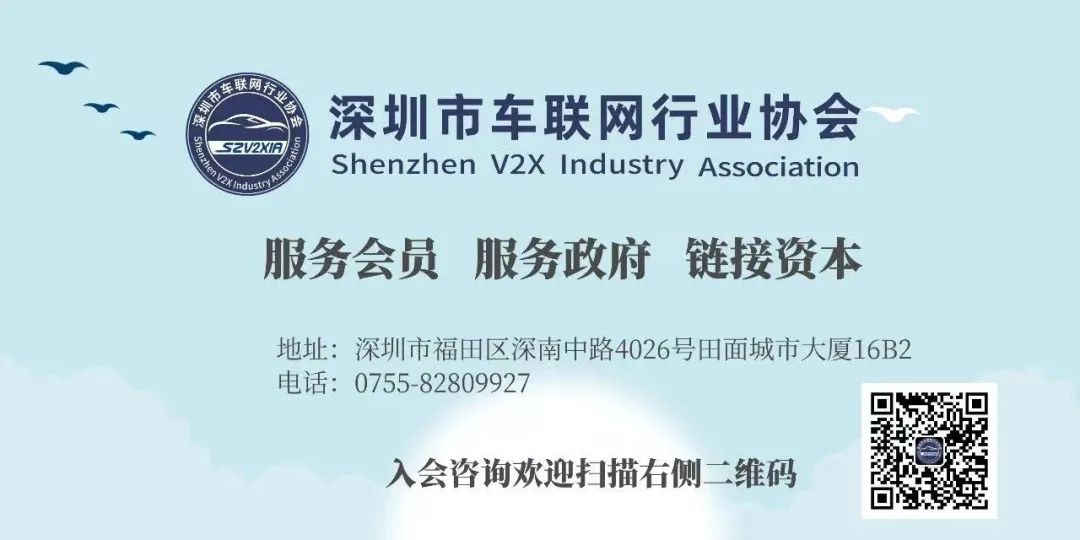In the past two years, as growth in the mobile sector has slowed and vehicle networking has accelerated, various giants have actively participated to seize the new track, making smart cars the hottest industry today. As Huaxi Securities puts it: “The biggest business opportunity in the past decade was smartphones, and the biggest business opportunity in the next decade will be smart cars.”
Vehicle networking is an important component of smart cars, bearing the mission of connectivity in the automotive industry’s “new four modernizations.” Currently, the definition of vehicle networking varies; it can be broadly divided into wide and narrow definitions. Broadly, vehicle networking includes digital cockpits, V2X, and other networking technologies, while narrowly it refers specifically to cockpit networking, especially vehicle-machine networking. This discussion will focus only on the narrow definition of vehicle networking.
01
Development History of Vehicle Networking in China

The development of vehicle networking in China began in 2008, and its history can be roughly divided into three stages.
(1) The Budding Stage: 2008 to 2016, a stage of budding and slow development.
In the early part of this stage, due to poor hardware performance and immature vehicle OS, companies began to enter the vehicle networking space from websites. The early vehicle networking was centered around TSP (Telematics Service Provider), providing services such as E-Call, B-Call, and I-Call through Call Centers, with typical representatives being General Motors’ OnStar and Toyota’s G-Book. Another type of product that began to emerge during this period was BoTai’s InCarNet. I believe InCarNet is the prototype of current vehicle networking, as it already incorporated elements like CP/SP (Content Provider/Service Provider) and forums, making it a very forward-looking product; one cannot help but admire BoTai’s innovation capability.
In the mid-to-late part of this stage, as hardware capabilities, especially communication capabilities, improved, vehicle OS (specifically Android) became more mature and stable, and the mobile internet ecosystem rapidly emerged. Domestic software and hardware integrators like BoTai, Desay, and Huayang began to integrate the mobile internet ecosystem into vehicle networking. Some innovators emerged during this period, integrating mobile internet ecosystems, such as JiDou and voice-based companions.
Regarding car manufacturers, overall installation volumes grew slowly, and they attempted innovation. New car-making forces began to emerge, but they did not create a sense of crisis for traditional manufacturers.
(2) The Growth Stage: From the Release of the RX5 Model in 2016 to Last Year (2021) Auto Show.
In the early part of this stage, BAT (Baidu, Alibaba, Tencent) participated in vehicle networking in different ways.
Alibaba formed a joint venture with SAIC to establish Zebra, developing a complete system including OS and upper-level applications, and in 2016, based on the Zebra system, released the SAIC Roewe RX5. The Roewe RX5 claims to be “the world’s first mass-produced internet car” and gained significant fame under the influence of major IPs like Jack Ma and Chen Hong, directly helping SAIC Passenger Cars increase sales. An important innovation in the RX5’s vehicle networking product was the shift from a functional list or button desktop to a map-based desktop. Unfortunately, Zebra has since struggled and has not produced any remarkable innovations thereafter.
Tencent focused on the ROM layer, allowing partners to develop upper-level interactions. This process was not smooth, as integrators selectively integrated some of the vehicle networking features provided by Tencent based on the needs of car manufacturers and their own ideas. Tencent also did not achieve full follow-up from all integrators, and project acquisitions were not abundant. Later, Tencent adjusted further, establishing Tencent Vehicle Link and forming its own series of products, actively cooperating with car manufacturers.
Baidu launched the CarLife product for mobile vehicle interconnection, which garnered a large number of projects for Baidu. However, Baidu did not promote deep cooperation based on this, losing some first-mover advantage. Other mobile internet ecosystem CPs and SPs also further participated, with dozens of participants emerging.
The vehicle networking products from various software and hardware integrators became increasingly mature, but homogeneity also intensified. Relying on their daring spirit, some new integrators quickly achieved significant sales.
For car manufacturers, this period saw the rise of new car-making forces. Companies like NIO, Xpeng, Li Auto, WM Motor, and Hozon successfully manufactured cars, started selling, and survived. It is said that during this stage, there were over 100 new car-making forces, though many more have failed.
Under the impact of new car-making forces and policies favoring new energy, traditional manufacturers also underwent significant changes during this period, launching new energy vehicles, including both new models under original brands and new brands for new energy vehicles. Independent brands launched high-end brands, such as SAIC’s IM, Dongfeng’s Lantu, and Geely’s Geometry. The rise of new energy provided a boost for the development of vehicle networking. Led by Tesla, new energy vehicles eliminated traditional physical buttons, integrating button functions into a touchscreen, sparking a trend of intelligent screens throughout the industry.
In the latter half of this stage, the concept of intelligent cockpits emerged. Almost every hardware integrator now has an intelligent cockpit product. The significant enhancement of hardware capabilities has provided greater design space for intelligent cockpits. Now, many new cars feature multiple screens in the cockpit, with even the central console lined with screens.
This stage also saw the emergence of a new type of supplier, referred to in the industry as Tier 0.5, such as YikaTong, Lion, XianDou, and LingShu. They rely on the vehicle models of their parent companies to quickly achieve mass production, thereby accumulating a large user base from a single manufacturer in a relatively short time.
(3) The Explosion Stage: Beginning from Last Year’s Auto Show, With Giants Pouring In.
This stage began from last year’s auto show, marked by Huawei’s deep involvement. Mobile internet giants (like Baidu), smartphone manufacturers (like Xiaomi), real estate companies (like Evergrande), and white goods manufacturers (like Skyworth) have all entered the automotive industry. In the application layer, mobile internet giants like ByteDance have also been recruiting talent, targeting the traffic gap in vehicle networking. Vehicle networking has thus entered an explosive period.
Why are new car-making forces and vehicle networking so popular now? First, the industry scale is huge, the automotive industry has a long supply chain, and can drive significant downstream employment, which is why many regions strongly support the introduction of car-making enterprises. Second, the growth in mobile devices is slowing, and mobile internet giants need to tell new stories, while the automotive industry can tell a big story. Third, these giants have various services that can be integrated into vehicles, bringing considerable revenue to enterprises.
Based on this background, we predict the future trends of vehicle networking as follows:
-
The scale of vehicle networking will continue to expand. Major domestic car manufacturers have set goals for smart connectivity, with nearly 100% installation rates expected for new cars in the next five years.
-
Vehicle networking ecosystem products will gradually tend toward the mobile internet model, with features like OTA becoming standard, and iteration speeds continuously increasing.
-
Owner operations will gradually unfold. The market for new vehicle purchases is rapidly declining, while the proportion of repeat purchases is increasing. This requires manufacturers to provide various operational services for owners, including operations across multiple ends such as vehicle-machine and mobile, entertainment, communities, fission, mall communication, points systems, and redemption, etc. The core purpose remains to enhance the owner’s recognition of the brand.
-
Commercialization will gradually unfold. The promises made a few years ago still need to be fulfilled. Paid content, paid memberships, traffic fees, and UI fees are all being launched. Directly transferring the mobile internet revenue model to vehicle networking is a simple, direct, and effective approach. However, what are the unique and future business models specific to vehicle networking? This is worth deep reflection and practice for the entire industry.
02
Market Characteristics of Vehicle Networking

The booming vehicle networking market is evident. However, how to tap into this market is something that service providers accustomed to mobile strategies need to consider.
To enter this market, it is essential first to understand the characteristics of the vehicle networking market.
What kind of market is vehicle networking? First, it is a B-end market, a large B, with a long supply chain and a large scale. It is a capital-intensive, knowledge-intensive, and labor-intensive industry, and also a pillar industry of the national economy. The top 20 car manufacturers are all large-scale, estimated to account for over 90% of the market. For application manufacturers, in the short term, it is unavoidable to work with car manufacturers, who have absolute control over vehicles (such as system development customization, OTA, etc.). Therefore, for application service providers accustomed to mobile internet strategies, cooperation with car manufacturers is 2B and then 2C; they must first do well in the B-end before they can possibly operate the C-end, which is entirely different from strategies used in mobile devices.
Secondly, it is a fragmented market. This characteristic is very obvious. The Chinese market is quite unique, with many car manufacturers, brands, and models. In this fragmented market, the market share of car manufacturers is not high; for automotive groups, the largest automotive group, SAIC Motor, has a market share of only about 30%, and the highest-selling model is only 600,000/year. This market characteristic is unlikely to undergo essential changes in the short term.
Based on the above characteristics, vehicle networking service providers need to analyze what they have, what they can offer, and what they want, and then determine how to proceed in the future.



This article is written by Song Xiaobo, head of the Vehicle Networking Division at Yunting. He graduated from Wuhan University with a degree in mathematics and has been deeply involved in the vehicle networking field for over ten years, having served as the channel head for vehicle networking at Guangting, Neusoft, BoTai, and Ximalaya, and has had in-depth cooperation with many car manufacturers and solution providers, possessing a profound understanding of the vehicle networking market.
